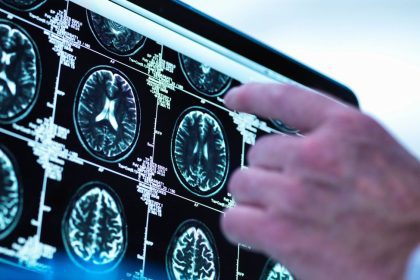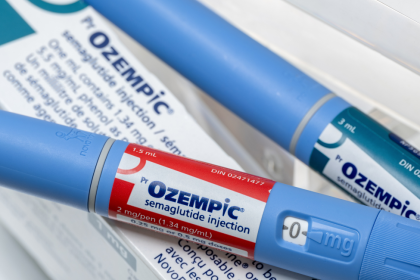Scientists maybe able to detect Alzheimer‘s by listening for the disease. This discovery represents a significant breakthrough in neurological diagnostic technology.
Researchers from Dartmouth University and the École de Technologie Supérieure, a Canadian university in Quebec, have produced a device called Hearable, which they hope will be able to track patients’ eye movements through tiny vibrations in the ear drum produced by movement during saccades – which are quick shifts used when looking around, due to a loss in brain tissue. This innovative approach could revolutionize how we diagnose neurodegenerative diseases.
A current method used to measure the disease’s risk is an eye exam that studies the changes in a person’s retina, but doctors can only detect this eye movement using expensive eye equipment that is not accessible worldwide. Traditional diagnostic equipment can cost upwards of $100,000, making it prohibitively expensive for many healthcare facilities.
However, the scientists believe using the device to identify unique sound patterns can help diagnose the condition early and at a cheaper rate. Early estimates suggest the Hearable device could be produced for a fraction of the cost of current diagnostic tools.
As there is no known cure for the disease, early diagnosis of Alzheimer’s is essential to slowing its effects on an individual. Studies show that early intervention can significantly improve patient outcomes and quality of life.
The team are hoping the tool can be more accessible so it can be used for early diagnosis. The potential for widespread deployment could particularly benefit rural and underserved communities worldwide.
The development of Hearable comes at a crucial time as global Alzheimer’s cases continue to rise. According to the World Health Organization, over 55 million people live with dementia worldwide, with Alzheimer’s disease accounting for 60-70% of cases. By 2050, this number is expected to triple, highlighting the urgent need for accessible diagnostic tools.
The technology behind Hearable builds on decades of research into the connection between eye movements and neurological health. Scientists have long known that changes in eye movement patterns can be early indicators of various neurological conditions, including Alzheimer’s disease.
The device works by detecting microscopic vibrations in the eardrum that occur when the eyes move. These vibrations, measuring just nanometers in amplitude, create distinct patterns that can be analyzed using advanced algorithms. Research has shown that individuals with early-stage Alzheimer’s display characteristic differences in these patterns compared to healthy individuals.
Clinical trials of the Hearable device have shown promising results. In initial studies involving 200 participants, the device demonstrated an accuracy rate of 85% in identifying early-stage Alzheimer’s cases. This accuracy rivals that of more expensive traditional diagnostic methods.
The development team includes neurologists, biomedical engineers, and computer scientists who have been collaborating on this project for over five years. Their multidisciplinary approach has been crucial in overcoming the technical challenges of detecting and interpreting these minute ear vibrations.
The potential applications of this technology extend beyond Alzheimer’s detection. Researchers believe similar principles could be applied to the early detection of other neurological conditions, including Parkinson’s disease and multiple sclerosis.
Cost estimates for the Hearable device suggest it could be manufactured for under $1,000 per unit, making it significantly more accessible than current diagnostic equipment. This cost reduction could enable widespread deployment in primary care settings, where early detection is most crucial.
The research team is currently working on miniaturizing the device further and improving its user interface to make it more practical for clinical use. They anticipate that with continued development and regulatory approval, the device could be available in medical facilities within the next two to three years.
Healthcare experts have praised this innovation as a potential game-changer in the field of neurological diagnostics. The combination of accessibility, affordability, and non-invasive nature of the test could significantly improve early detection rates for Alzheimer’s disease globally.
The development of Hearable has also attracted attention from major medical technology companies and healthcare providers interested in bringing this innovation to market. Several partnerships are currently being explored to accelerate the development and deployment of this technology.














